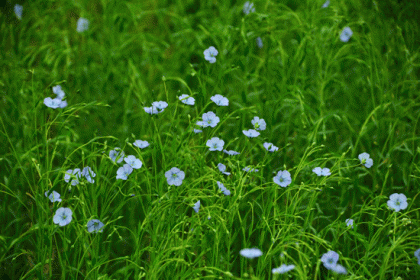This attractive species was formerly used as a crop for oil and linen-making; it can now be found scattered across Ireland, more towards the southern half of the country on waste ground and in verges. It is an annual, bearing exquisite blue 5-petalled flowers (3-4cm across) on tall, slender stems. The stigmas are club-shaped and about as long as the stamens which have deep blue anthers. Branched veins lead in, almost from the outer edge of the petals, darkening as they go into the centre of the flower. Stems are sometimes branched and bear narrow, lanceolate, 3-veined leaves. The plants grow to about 80cm tall. Flowering from May to September, this species is now spread as a result of feeding birds with the seeds in ‘Bird-seed’ mixtures. It belongs to the Linaceae or Flax family.
I first saw this most attractive plant in Gibletstown in Wexford in 2010 and photographed it there in 2018.
If you are satisfied you have correctly identified this plant, please submit your sighting to the National Biodiversity Data Centre




